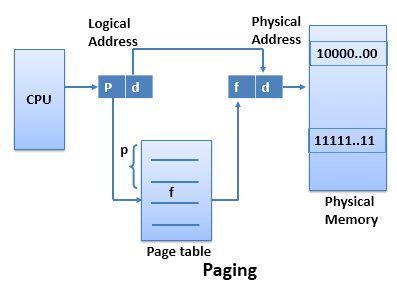About topic
Know About topic
Paging

Pages and Frames
All About Paging
Paging is a memory management scheme that eliminates the need for contiguous allocation of physical memory. This scheme permits the physical address space of a process to be non – contiguous.
The mapping from virtual to physical address is done by the memory management unit (MMU) which is a hardware device and this mapping is known as paging technique.
- The Physical Address Space is conceptually divided into a number of fixed-size blocks, called frames
- The Logical address Space is also splitted into fixed-size blocks, called pages.
- Page Size = Frame Size
Advantages and Disadvantages
- Paging reduces external fragmentation, but still suffer from internal fragmentation.
- Paging is simple to implement and assumed as an efficient memory management technique.
- Due to equal size of the pages and frames, swapping becomes very easy.
- Page table requires extra memory space, so may not be good for a system having small RAM.

Paging Mechanism
All About Paging Simulator
-
Inputs
- No. of Pages and Frames
- Size of a Page/Frame
- Page Table Contents
- Logical Address
-
Output
The output which would reflect after we enter our inputs is the real physical address which contains the instructions which we want to access. In computers, MMU(memory management unit) is assigned this job to convert the logical address to physical address.
F.A.Q
Frequently Asked Questions
Questions related to paging
-
What is paging and why do we need it?
Paging is used for faster access to data. When a program needs a page, it is available in the main memory as the OS copies a certain number of pages from your storage device to main memory. Paging allows the physical address space of a process to be noncontiguous.
-
How is paging different from segmentation?
In Paging, a process address space is broken into fixed sized blocks called pages. In Segmentation, a process address space is broken in varying sized blocks called sections.
-
What are pages and frames?
A page (or memory page, or virtual page, or logical page) is a fixed-length contiguous block of virtual memory. A frame (or memory frame, or physical page, or page frame) is a fixed-length block of RAM (ie. physical memory, it exists - as in "physical".
-
What is a paging table?
A page table is the data structure used by a virtual memory system in a computer operating system to store the mapping between virtual addresses and physical addresses.
